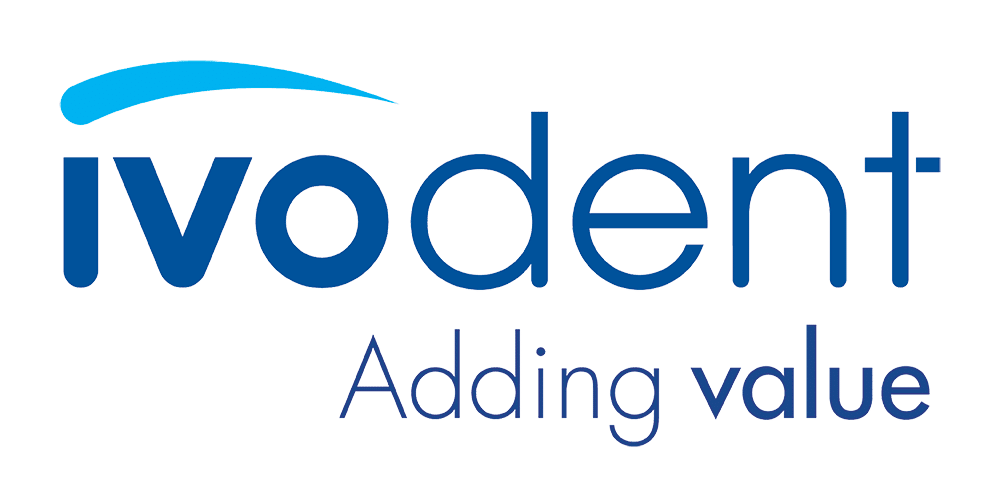
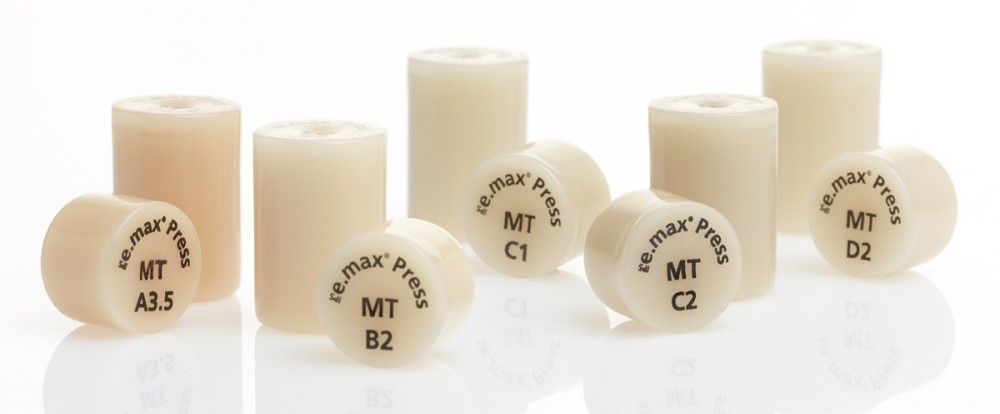
Over many years, the IPS e.max Press material and the Programat G2 press furnace have been consistently further developed to work together smoothly. The benefits of these fine-tuning efforts are clearly revealed in the fabrication of esthetic anterior restorations. Nicola Pietrobon, a seasoned dental technician, shows the excellent results he is able to achieve with this winning combination.
The restorations presented here were created in collaboration with Dr med. dent. Stefan Paul in Zurich, Switzerland.
Preoperative situation
The patient presented to our laboratory because she wished to have the appearance of her front teeth improved. The enamel defects had previously been built up and enhanced with composite resin. However, the result was not to her satisfaction

Figure 1: The photo shows the preoperative view before the treatment commenced.
Procedure

Figure 2: Nicola Pietrobon uses a Programat EP 5010 G2 to create IPS e.max Press restorations

Figure 3: In the laboratory, the pressed IPS e.max Press crowns and veneers were prepared for their placement in the patient’s mouth.
6. Cementation:
The prepared crowns and veneers were etched in preparation for cementation.

Figure 4: The completed crowns and veneers were placed in the patient's mouth.
The outcome clearly demonstrates how state-of-the-art ceramic materials are capable of reproducing the natural tooth structure and what type of restorations can be produced with them.
The IPS e.max Press restorations were successfully placed, and everyone involved in the case was highly satisfied with the result. Due to their true-to-nature translucency and opacity* the ceramic restorations blended in seamlessly with the natural teeth. The outcome clearly demonstrates how state-of-the-art ceramic materials are capable of reproducing the natural tooth structure and what type of restorations can be produced with them.
Better trust the original: the Ivoclar press technology. Lab-proven. Future-proof.
Original source Ivoclar Blog - posted with permission
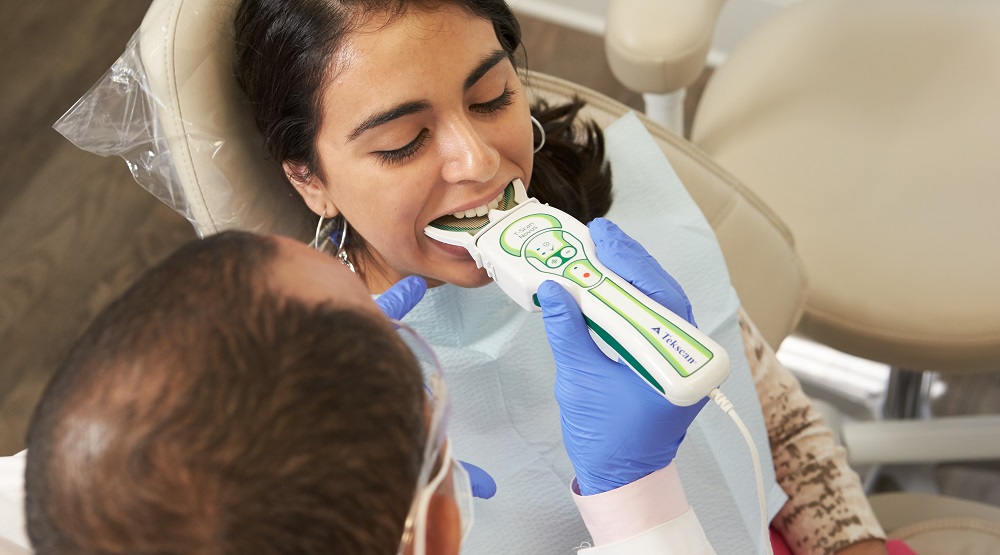
With his key interest in Digital Aesthetic Dentistry and Implantology, Dr Waldo Engelbrecht from Enamel Clinic in Cape Town uses Tekscan’s T-Scan - dentistry’s premium digital occlusal analysis system. He told IVOblog it’s something he now uses every single day.
“T-Scan has really improved a number of steps when I am treating patients.
The diagnostic value is really amazing, especially for patients who have discomfort but cannot pinpoint it and we as clinicians cannot see where the problem lies. I’ll use the T-Scan and see that there actually is an interference that we can adjust.
Even patients with sensitive teeth can start to be treated by removing the heavy contacts.
It is also great for checking occlusion after placement of crowns, bridges and implant crowns. It makes a lot more sense than when you just use normal bite paper because you can identify where the heavy contacts are and which aren’t problem areas.
This saves a lot of time as it eliminates having to conduct multiple, repetitive follow-ups– you can get to the cause of the problem much quicker.”
Located in the Innovation District of Boston, Tekscan has been in business since 1987. T-Scan™ provides dynamic occlusal measurement - revealing the level and timing of force on individual teeth and the occlusal stability of the overall bite. Nearly EVERY dental procedure performed impacts occlusion. Poor occlusion affects quality of life. T-Scan is a tool used by dentists to restore this quality of life. Click here to view Tekscan products on IvodentOnline.
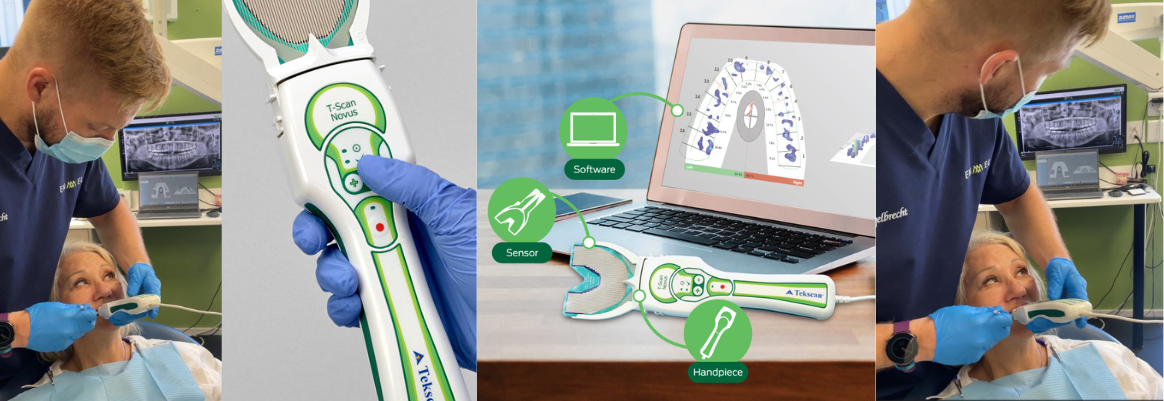
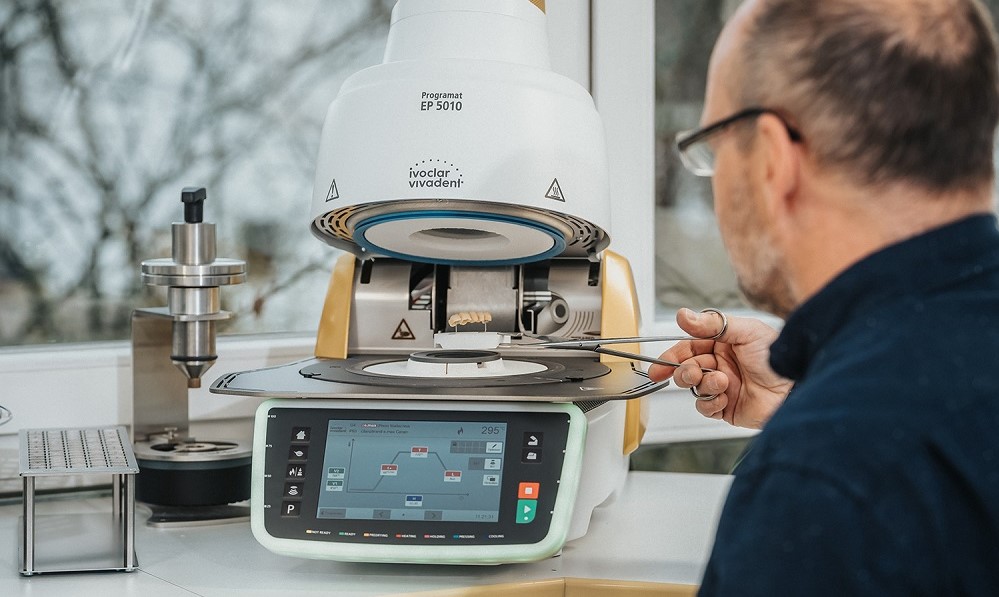
Master dental technician Claus Fiderer is specializing in implant prosthetics in his laboratory. As a dedicated user of Ivoclar products, he entered the 2021 prize draw held to celebrate the 30-year anniversary of the press technology. He was lucky and won the first prize: a special gold edition Programat EP 5010 G2 press furnace. In the interview below, he tells us why he enjoys using the press technique and what advantages he sees in using it.
How did you get into dental technology and what do you like about it?
Claus Fiderer: As a child, I used to love building stuff, especially model aircrafts. I was fascinated by the precision mechanics behind these things, and I still am. My dad was a dentist and so there was a connection with dentistry from an early age. One thing led to another and I decided to go into dental technology. I especially enjoy that part of my work that requires high precision and fine detail.
What services do you offer in your laboratory?
Claus Fiderer: We specialize in implant-supported and telescopic dental prostheses. It is essential for us to collaborate closely and smoothly with our dentist customers. We see ourselves as a service provider that always strives to achieve the best possible result. We care greatly about providing in-depth advice and that is why we like it when patients come to see us in person in our laboratory. This way, we have the opportunity to assess our long-term results, once the patients come back a few years down the line. This is what makes our work exciting and gives as a lot of variety in what we do. What pleases us most is when patients tell us how happy they are with their restorations.
What are your motivations behind using press technology and especially lithium disilicate press ceramics (IPS e.max Press) from Ivoclar?
Claus Fiderer: Up to around 1997, we did all sorts - layering on dies and what not. Then came along Ivoclar’s lithium disilicate press ceramics: IPS Empress. The first of its kind so to speak. All of a sudden there were many more possibilities available to us than just layering. My decision was also motivated by the fact that restorations became a great deal more profitable with the press technology. Ivoclar must clearly be seen as the pioneer of the press technology. Over the years, I would never have wanted to use anything else, true to the motto “never change a winning team”. Why would I want to replace something that works so perfectly well?
The service also deserves a mention here: There is always a contact person available in the unlikely event that something does not quite work the way it should. That’s really important to me and simply has to be in place.
Do you already own a press furnace from Ivoclar? If yes, which features do you particularly like about it?
Claus Fiderer: The old Programat furnace (EP 3000) that we have been using in our laboratory has always served us well. We didn’t think of replacing it. The prize draw, however, has given us the opportunity to do that and we are absolutely delighted with the new press furnace. We have always loved our old furnace because it has always worked. It is intuitive to use and we were always able to achieve reliable and consistent results. Simply a very reliable piece of equipment.
What advice would you give to other dental technicians who are not yet using press technology?
Claus Fiderer: Start using it tomorrow – or better still, start using it today! Why? Press technology offers many more possibilities, especially in the anterior region. This is exactly where press technology has become indispensable. And not only that, but the selection of different press ingots allows you to achieve custom-tailored restorations really quickly and easily.
I trust IPS e.max Press because …
Claus Fiderer: … there is no substitute for Ivoclar’s many years of experience.
Visit our IVODeals page to see our deal on IPS e.max Press
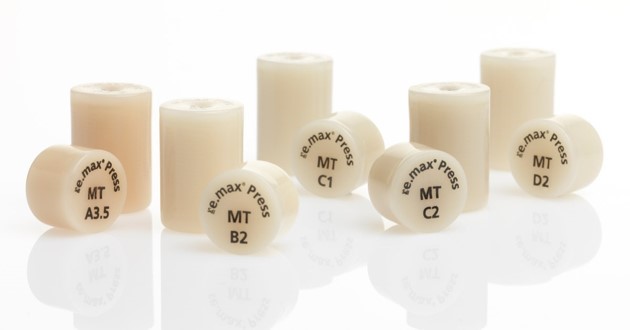
Original source Ivoclar Blog - posted with permission


Are you GBT Certified yet?
Does your team and your practice meet the GBT Certification requirements?
Here’s the Checklist to find out:
A practice must have the following in place to qualify as “GBT (Guided Biofilm Therapy) Certified” and to get all the benefits:
1) Own a premium GBT device – either the EMS AirFlow Prophylaxis Master or AirFlow Master Piezon to perform full Guided Biofilm Therapy.
2) Professionals using these devices must be Swiss Dental Academy (SDA) trained and follow the 8-step GBT Protocol (training needs to be updated every two years).
Training includes a 4-module on-demand online course (based on the latest scientific research) on all the aspects of GBT (x11 CPDs). It uses both a multi-functional, interactive learning programme hosted on the Ivodent eCademy, followed by an in-person training session (x8 CPDs) by an SDA accredited trainer.
Cost: R1 200 (incl VAT) for both the 4-module online on-demand and also the in-person training – for a total of x19 CPD points.
GBT Certified practices also have access to paid-for and free e-learning updates and webinars, keeping up to date with all the latest research, technologies and clinical practice standards.
All existing GBT qualified practitioners who have completed an SDA course with Ivodent on or before 30 July 2022, will get access to the 4-module course at no cost, to update their training, and earn x11 CPD points. The in-person session is not needed. The GBT training is valid for two years. All professionals that completed the SDA GBT course before 2019 must complete the online modules within 6 months to stay GBT qualified.
3) Use exclusively original EMS products, EMS Swiss Instruments and EMS Airflow Powder.
4) Agree to uphold the GBT Consensus confirming evidence based clinical efficacy.
5) Complete and submit x10 patient surveys to EMS (additional x40 over 6mths after certification).
Every GBT certified practice is given a Swiss Dental Academy (SDA) plaque and a framed GBT Certificate to display at their premises. They are also offered marketing support by EMS and will have access to GBT marketing materials and patient fliers to promote GBT and their VIP status to patients, as well as copy and paste social media templates, GBT pictures and logos for their website. All GBT certified practices are added to consumer location finders on both Ivohealth and the EMS global website.
The SDA approved GBT on-demand and in-person course will be included, free of charge, when you purchase a Premium EMS device.
Already attended the course and purchasing a premium device? You will be credited with R1 200 worth of materials to reimburse the cost of course fees paid.
Book your on-demand course today and receive consumables to the value of R1 200 if you decide to proceed.
Contact your local Ivodent rep or email Stephanie Burgess on [email protected] to book your free EMS demo or for further details on how to become part of an exclusive global network of passionate dental professionals, performing dental prophylaxis at the highest possible level.
Visit the Ivodent eCademy for details on GBT courses, course payment and access.
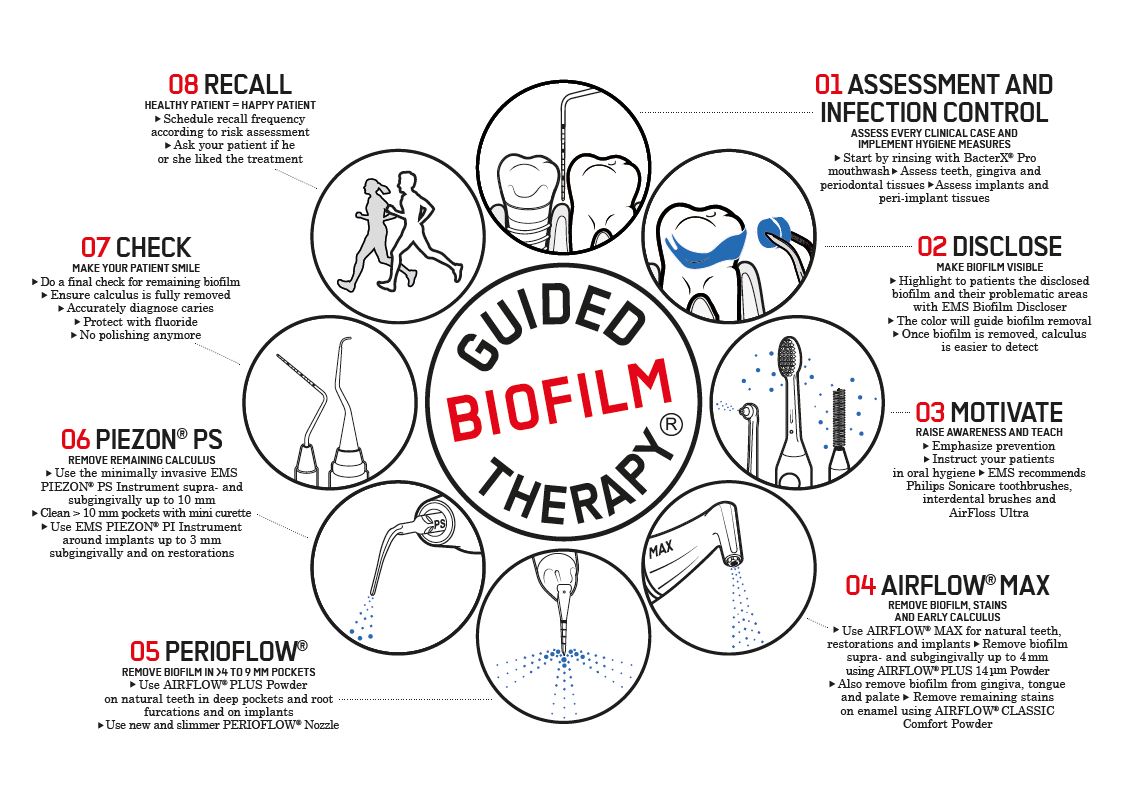
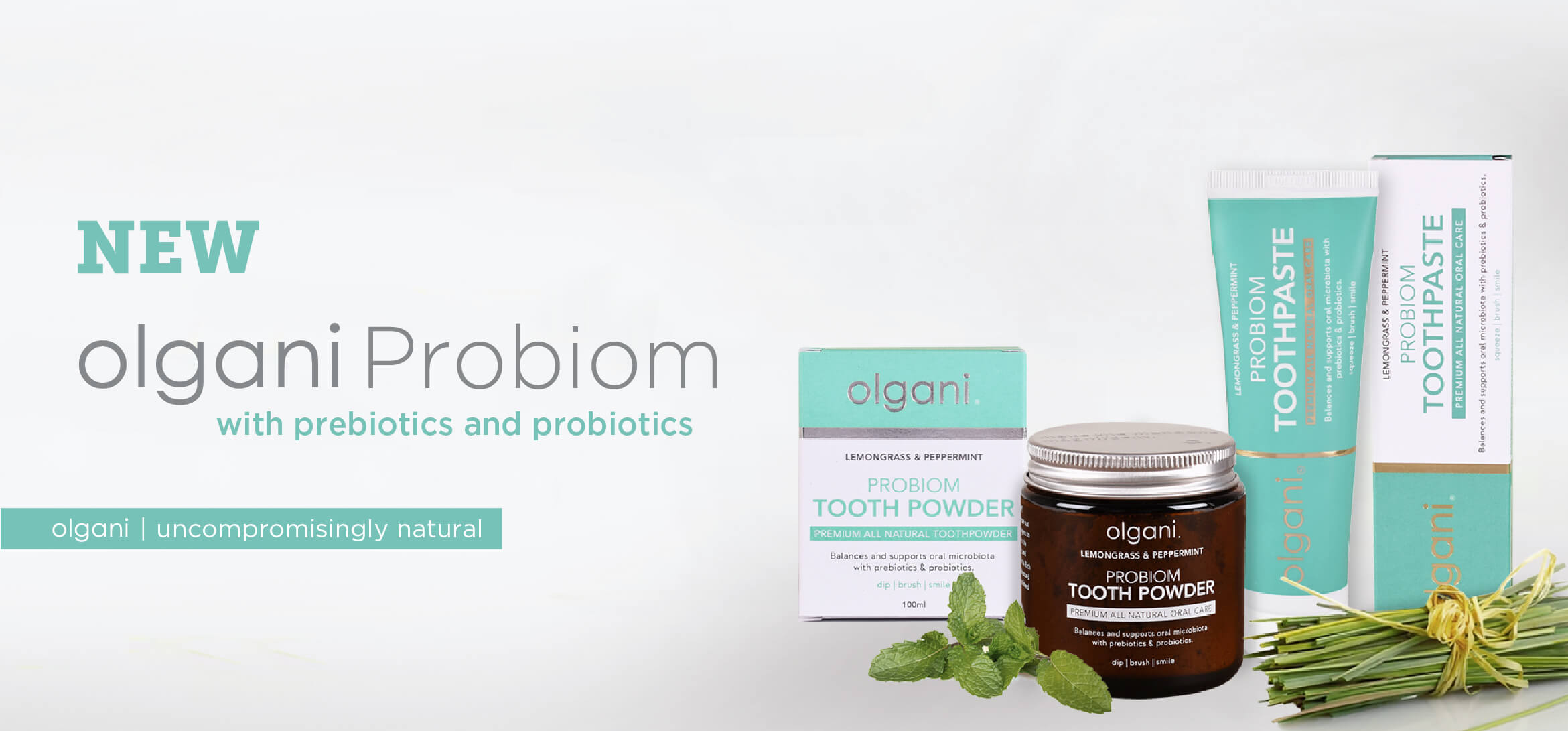
Uncompromisingly Natural Oral Care – Now With Probiotics and Prebiotics
Introducing Olgani Probiom, South Africa’s first toothpaste and tooth powder formulated with probiotics, for a healthy oral microbiome and total wellness.
The new Olgani Probiom range is the latest innovation from Olgani Naturals, manufacturers of ‘uncompromisingly natural’, premium oral care. The all-natural toothpaste and tooth powder contain live probiotics, prebiotics and a carefully selected range of active, edible ingredients for a healthy mouth and body.
Why Put Probiotics in Oral Care?
The mouth is the beginning of the digestive tract and is home to more than 700 bacteria, viruses and fungi; it is the body’s second most abundant microbiome, after the gut. When in balance, this ecosystem works in harmony. An imbalance can cause oral disease, including cavities and gum disease, and also spread to other parts of the body, contributing to chronic disease.
Probiotics are ‘good’ bacteria with well-known health benefits for the immune system and digestion. Research over the past decade has demonstrated their oral health benefits – helping prevent cavities, gum disease, fungal infections and bad breath (aka halitosis). People with healthy teeth and gums have been shown to have a robust, balanced oral microbiota.
Olgani Probiom contains two probiotics – Lactobacillus rhamnosus and Lactobacillus casei – which have been shown to have significant oral health benefits
Prebiotics are insoluble fibres that feed probiotics. Olgani Probiom contains Olgani’s signature Prebio+ care blend of prebiotics, with inulin and xanthan gum, to help maintain and nourish a healthy microbial balance.
Olga Niemkiewicz, founder and managing director of Olgani said the new Probiom range was developed after months of research and testing. “It is well-documented that your microbiota influences the entire body’s functioning. Microorganisms in your mouth are directly connected to your gut. It makes sense to try to balance and support oral microbiota in support of complete wellness.
“We selected the ingredients in Probiom to fortify and nourish the microbiota in the mouth. Prebiotics and probiotics help to increase the number of friendly bacteria. Herbal extracts and mineral clays support healthy gum tissue and provide vital minerals to support the remineralisation of enamel and to protect dentine.”
Active, Natural Ingredients
The nourishing ingredients in Olgani Probiom include detoxifying bentonite; nutrient-rich chlorella; French green clay; green tea; antibacterial, antioxidant and anti-inflammatory lemongrass; refreshing peppermint as well as probiotics Lactobacillus rhamnosus and Lactobacillus casei and prebiotics inulin and xanthan gum.
Olgani Probiom does not contain fluoride, sodium lauryl sulphate (SLS) or other foaming agents, glycerine, sorbitol or sweeteners, titanium dioxide or any artificial preservatives, taste enhancers or additives. It is vegan and cruelty-free.
The tooth powder comes in zero-waste packaging – a biodegradable box, glass jar and aluminium lid – and, because its production requires less water and electricity, is an extremely environmentally-friendly oral care option.
Testimonials
Wellness doctor and integrative health practitioner, Dr James Liddell said that the probiotics in Olgani Probiom will help repopulate the mouth with healthy bacteria which can reduce bad breath, cavities and periodontal disease. He likes the fact that Probiom is free from controversial ingredients like sodium lauryl sulphate, fluoride and triclosan. “Olgani Probiom has a wide range of oral health benefits and leaves the mouth feeling fresh and clean. I love the lemongrass and peppermint flavour.”
Dentist Dr Marieke Fraenkel described Olgani Probiom as ground-breaking and said she enjoyed the fresh taste.“I finally have an answer to promote a healthy oral microbiome to my patients, diminishes sensitivity, an answer to halitosis and assistance to the gut biome to support holistic health without polluting your body or the planet.”
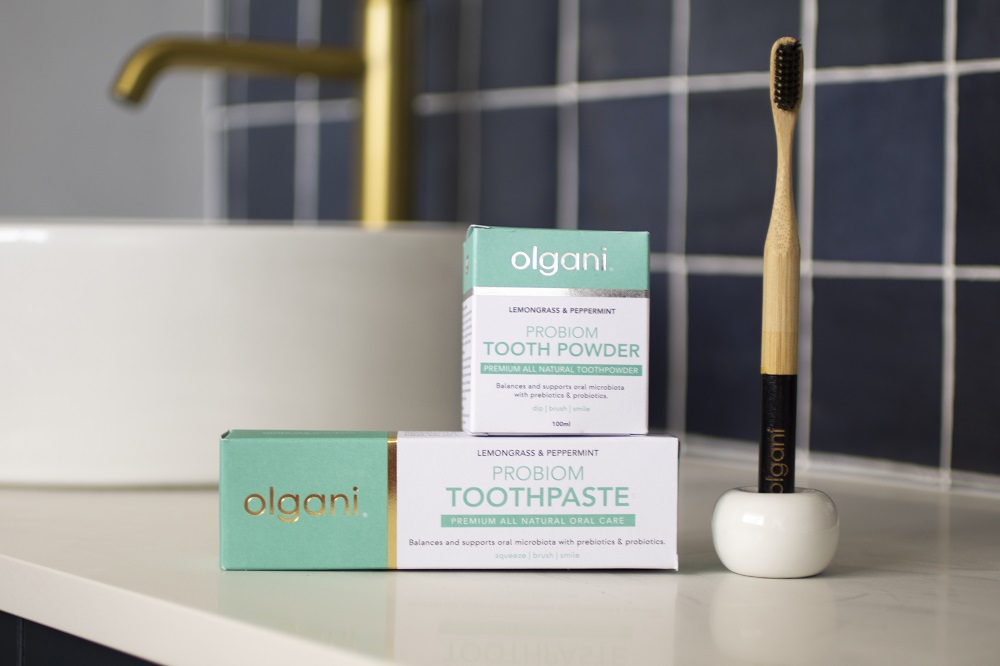
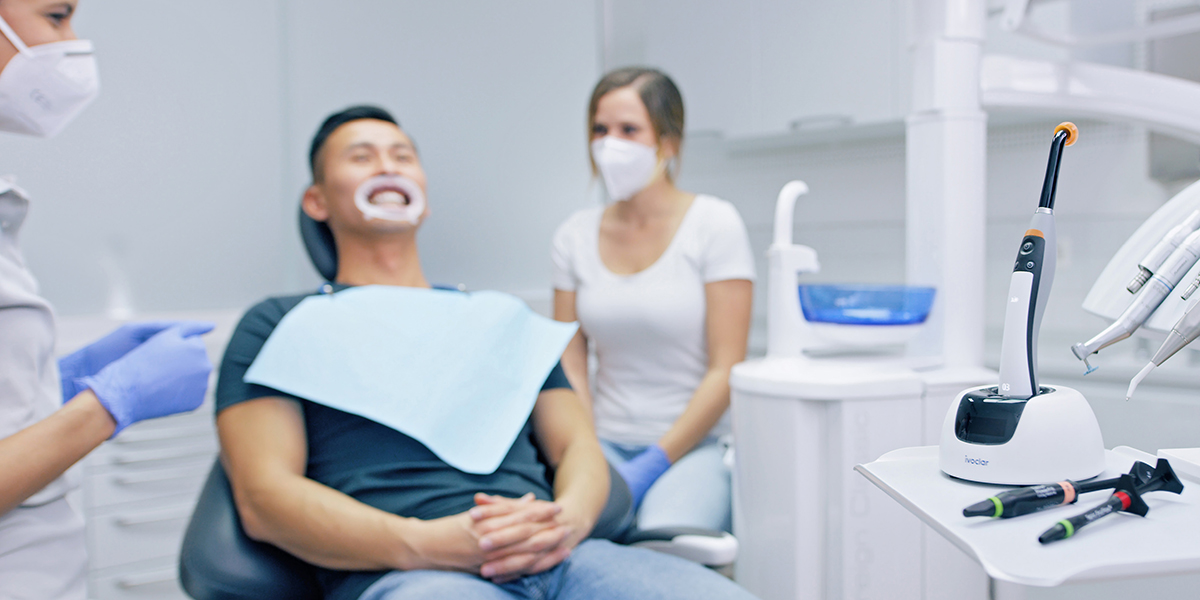
Is light polymerization a necessary evil or just a short, intermediate step? The Canadian dental clinician and researcher Richard Price at Dalhousie University in Halifax has spent the better part of the past few decades studying curing light technology. In an interview with Dental Tribune he shared his advice on how to light cure properly and explained why polymerization lights are so important for the success of your dental office.
Dr. Price, you have been instrumental in researching curing light technologies. Would you mind sharing your thoughts about compromised polymerization and its potential effects on clinical success?
Thank you for this opportunity to discuss the importance of using a good curing light to prevent undercuring dental resins. The problem as I see it is that most dentists were never taught much about the importance of proper light curing, or what to look for in a good curing light. Even the cheapest light and the sloppiest technique will produce a resin restoration that is hard to touch with an explorer. The problem is that the dentist cannot determine whether the bottom or the inside of the composite restoration has been adequately cured. An under-cured restoration is weaker and more prone to fracture, the bond strength to the tooth is reduced or even non-existent, post-operative sensitivity occurs, the color stability of the resin is compromised, and more chemicals are released into the body from the partially cured resin. These are all very undesirable outcomes of inadequate light curing, and none of them need to occur.
What should dental professionals consider key attributes of curing lights?
Curing lights are defined as medical devices and only approved medical devices should be used on patients. If we look at Ivoclar Vivadent’s curing lights, they are not only approved medical devices, but they are also functional, ergonomic, reliable, and thoroughly tested according to international standards. Furthermore, the broad emission spectrum of Bluephase lights means that they will cure all known dental resins and bonding systems.
Which key attributes of the Bluephase PowerCure will clinicians find helpful?
In addition to the new Polyvision technology, the light's high power and irradiance can cure both direct and indirect resin restorations. Depending on the thickness of the indirect restoration, the light can photocure the resin cement used to bond most indirect restorations to the tooth. I like to use several exposures using the Turbo or the 3s settings to photopolymerize the resin under my indirect restorations and the regular high output settings for my direct resin restorations.
The patented Polyvision technology has been described as an inbuilt personal polymerization assistant. How does it work?
The Polyvision feature should help clinicians achieve reliable curing results by automatically detecting if the light tip moves away from the tooth when the curing light is on. Polyvision alerts the operator using vibration or an acoustic signal if it detects movement. Then, depending on how far the light tip moves away from the tooth, it will automatically increase or even stop the light-curing cycle.
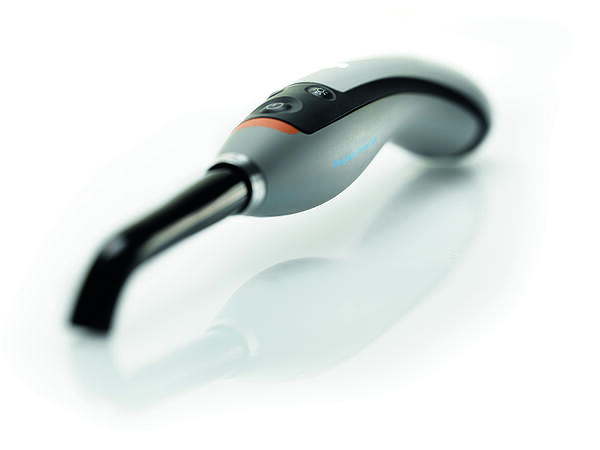
Your research shows the importance of uniform beam profile and irradiance. Why is this an important factor to consider?
Ivoclar Vivadent recognizes that the success of its resin-based products depends on them being adequately light cured. Suppose the curing light delivers hot spots of high irradiance and regions of low irradiance. In that case, the composite will not be uniformly and evenly cured. It is like baking a cake in an oven that does not provide even heating. The cake cooks, but not evenly. The current range of Bluephase lights delivers an exceptionally uniform light output and uniform irradiance across the light tip so that the composite is evenly cured.
Should dentists regularly measure the light output from their curing lights, and is a built-in radiometer helpful?
Manufacturers will often sell their light based on a claim that it delivers a high irradiance. The light may indeed deliver a high irradiance, but the power output from the light may be rather low. So how can a high irradiance light also be a low power light?
The reason is how the international standards report the irradiance from the light. In the standard, the total power from the light is first measured. This power is then divided by the area of the light tip to provide the irradiance. This means that to deliver the same irradiance, a light with a 7 mm diameter light tip need only produce half the power of a light with a 10 mm diameter light tip (because the area of a 7 mm diameter tip is half that of a 10 mm tip). In addition, this method provides a single irradiance value that is only an averaged value across the tip; however, because many lights have a poor beam profile, there are often hot spots of high irradiance and areas where the irradiance is rather low across the light tip. I see this all the time in budget lights, and this is completely missed in the international standard that only reports a single averaged irradiance value.
Certain models of Bluephase lights also include a radiometer in the charging base. This integrated tester makes it easy to test the light every day. I know that may seem unnecessary to some, but if you only test your light once a week or once a month, what will you do when the light fails the test, because it will fail at some point? Are you going to recall and redo, at no cost, all the restorations you placed since the last successful test? The solution is to test the light every day, and Ivoclar Vivadent makes this an easy thing to do.
Can you please advise on the correct polymerization technique for dental professionals?
When light-curing, I recommend the following steps:
Do you have any other tips to consider during polymerization that will help clinicians in their light-curing?
For Class II situations, I also cure from the buccal and lingual aspects after removing the matrix band.
I use the same technique for indirect restorations, but I usually use a tacking tip first, clean up the excess cement and then light cure with the tip in contact with the indirect restoration.
Only disinfect the light using the manufacturer’s recommended disinfectant. Some disinfectants can damage the light. Read the instructions to find out what you can safely use on the light.
Check that the end of the curing light tip is clean and has no chips, cracks, or cured resin on it. Using a barrier over the light helps with infection control and prevents resins from bonding to the light. However, when there is an infection control barrier over the light tip of the Bluephase PowerCure, and G4 light, the best option is to use two hands and make sure that the light tip covers the restoration. Watch what you are doing with that light tip.